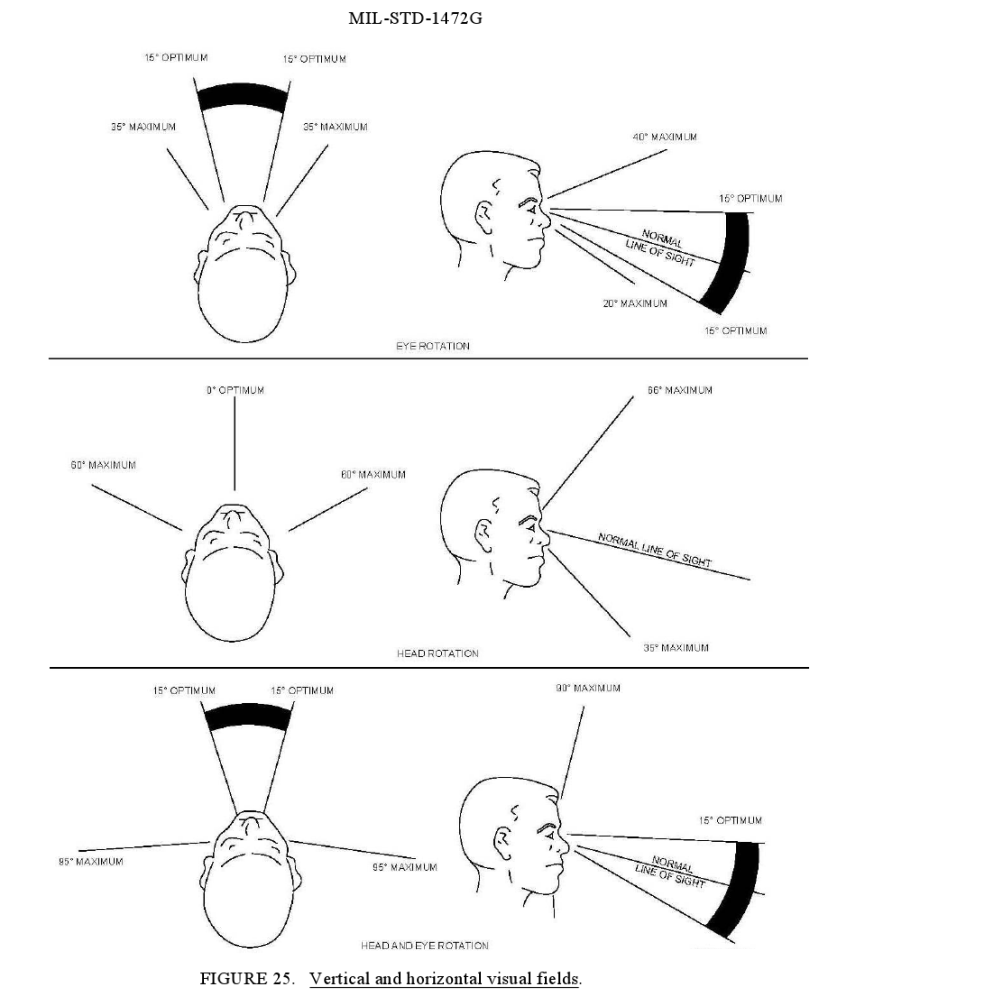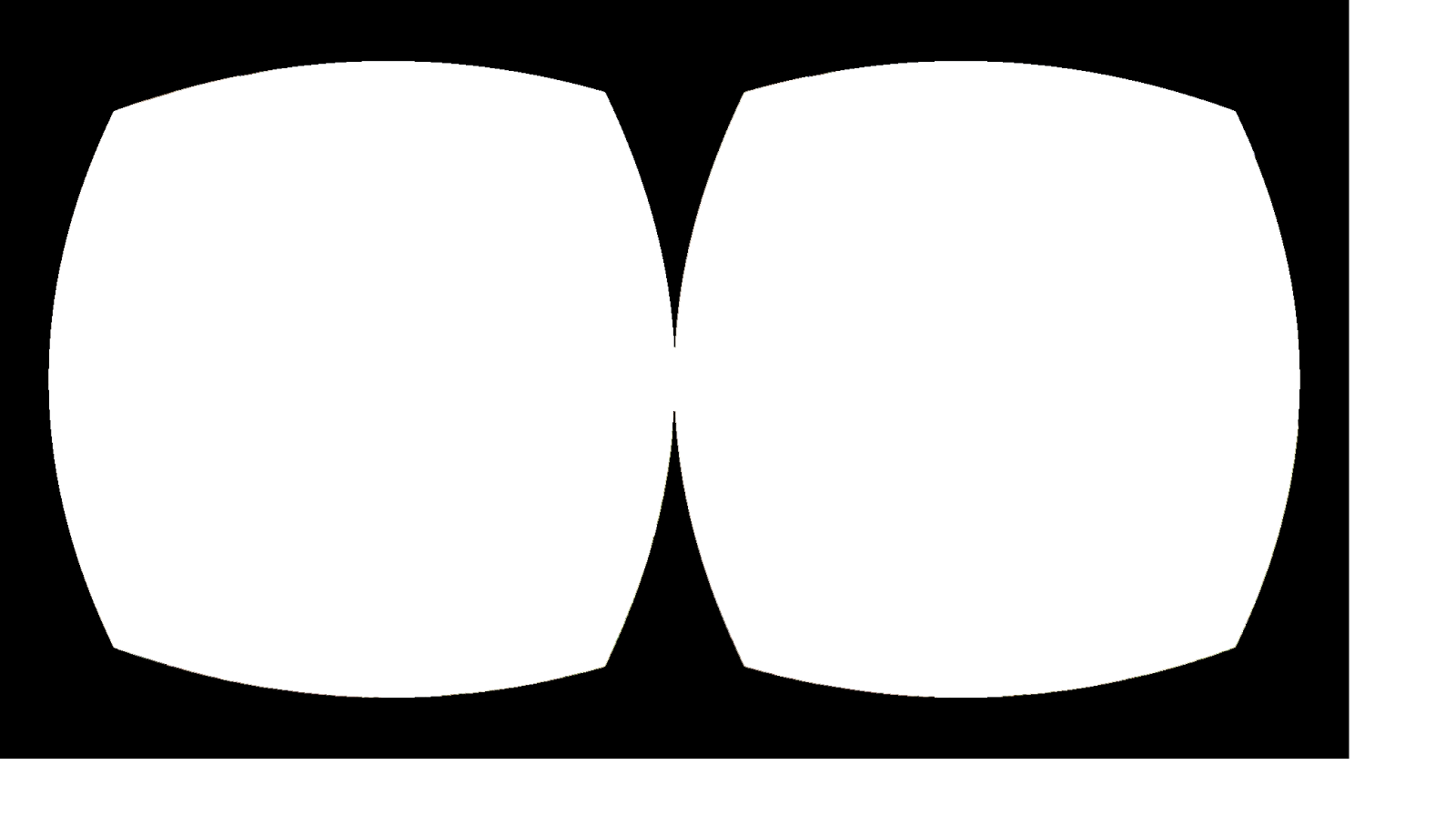tl,dr: How much resolution do VR HMDs need to approach that of a “Retina Display”? Using the current optics setup, about 10x more than they do now. Roughly 22,000 × 10,060 pixels per display.
I work for Framestore’s Virtual Reality Studio. Occasionally I ponder big questions. Sometimes these paths cross. We also make a lot of videos – both for the incorrectly named 360º videos (of which I’m firmly in the “this is NOT Virtual Reality” camp, they just use the same hardware as VR) and as backdrops for VR experiences.
I was wondering just how good we should make our videos in VR without going overboard. You just want to make the resolution of the video good enough so it either hits the resolution of the display, OR it hits the maximum resolution of the eye – whichever is lower. So this got me to thinking, what IS the resolution that the typical person can discern when wearing an HMD? Hmm… where to start…
Well let’s take a guess that Apple’s definition of a retina display is a good resolution to shoot for. The definition of a Retina Display is generally accepted as 300 ppi (pixels/inch) @ 10-12 inches from eye. (Really – who holds a display in front of their face? – no matter…)
OK, so let’s convert this into some form of useful VR measurement. If we use the formula;
PPD (Pixels /Degree) = 2 D R tan(½º)
R = resolution in pixels/unit-distance
D = distance in units-distance
= ~57 PPD
So 57 PPD is going to be our definition of “Retina Display”. We need to convert this to the VR FOV (Field of View) to calculate how big a VR display has to be. Well’ since this is speculative let’s go the full value, the average full FOV.
(Update – I have since discovered that the accepted resolution value for the human fovea is 60 pixels/degree)
SO now just how big is the average FOV, both horizontally and vertically? Well, there’s quite a few opinions, but since I’m a US taxpayer, let’s let the US Government – specifically the United Stated Department of Defense – answer this (and many many other human factors questions) in MIL-STD-1473 G – “Human Engineering” https://www.document-center.com/standards/show/MIL-STD-1472. or
http://everyspec.com/MIL-STD/MIL-STD-1400-1499/MIL-STD-1472G_39997/
So if we look through this wonderful, rich, document that contains many many useful items for the aspiring VR/AR UI & UX designer, we arrive at the following diagram:
So we can see that according to the DOD, the average FOV is 190º horizontal and 120º vertically.
But.. the horizontal value is for both eyes. If we instead use the horizontal FOV of a single eye 95º from the eye center outward, and 35º from eye center inwards, we get about 130º FOV for an eye.
For 57 PPD, this gives us 7,410 x 6840 pixel display – per eye, or a 14,820 x 6840 a full stereo FOV retina display using current lens optics with a single split screen.
I might be wrong, but current HMD’s are nowhere near that….Let’s compare to a DK2.
A Oculus DK2 FOV max is 95º horizontal and 106º vertical (from vrHmdDesc::MaxEyeFov – not using the 100 degree value). So assuming we still have 35º from eye center inwards this gives of 64º per eye horizontal FOV for a DK2.
Thus we’d need a resolution 3648 x 6042 to make a “Retina Display” at this FOV for one eye. A DK2 is 1080 x 1200 per eye. If we use the current split screen setup for left eye/right eye, 7269 x 6042 is the “Retina Display” resolution, while 2160 x 1200 is the DK2s.
But we’re not done. You see, due to the lenses, most HMD’s render out smaller area than the actual resolution. If you plot it out from a standard DK2, you’ll get the actual pixels used (white) vs the unused pixels (black);
Thus only about 68% of the pixels in the display are actually used to render what the eye can see.
So my final tally is that for an HMD to have a retina display and using lenses to bend the flat display, we’d need about 10,900 x 10,060 per eye. This is about 85 times the pixels of a DK2. Or, put another way it’s about a factor of 10x the current resolution.
Considering that I currently have to try to get a render done in about 5 milliseconds with my current target hardware (Oculus’ CV1), it looks like my role as chief performance optimization engineer is pretty safe occupation for the near future.
It’s also a good thing to know, as now when we’re doing high quality rendered video we should keep the high quality stuff archived (at 20K x 30K as the target because, 360!), because while a 10x jump in resolution sounds like a lot, I have no doubt that we’re going to rapidly iterate on VR hardware improvements and that number will soon be well within the realm of possibility.


